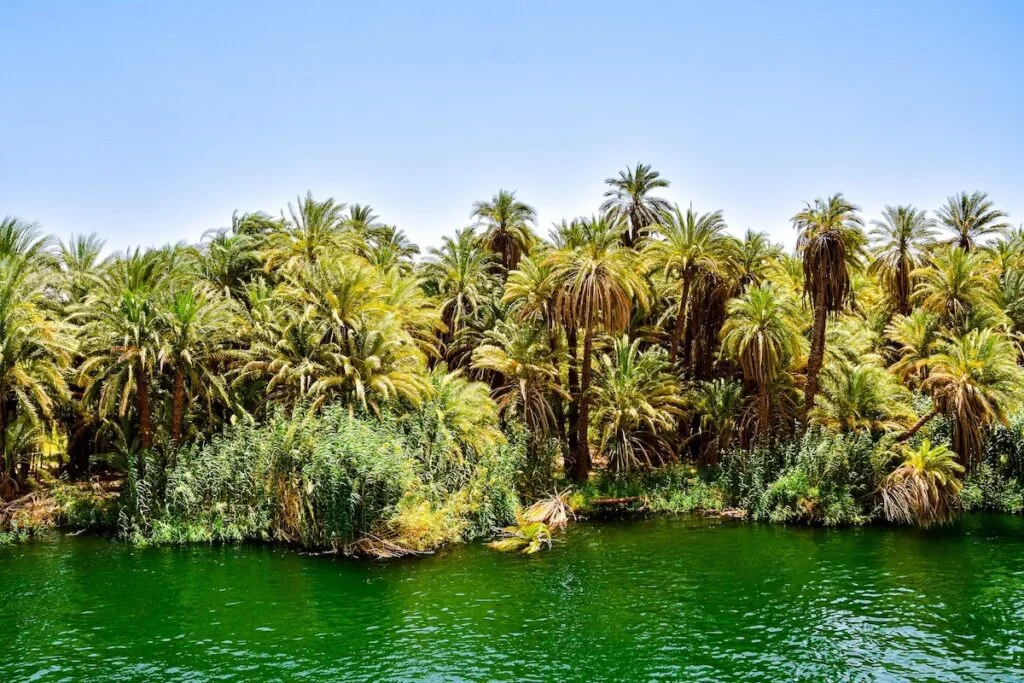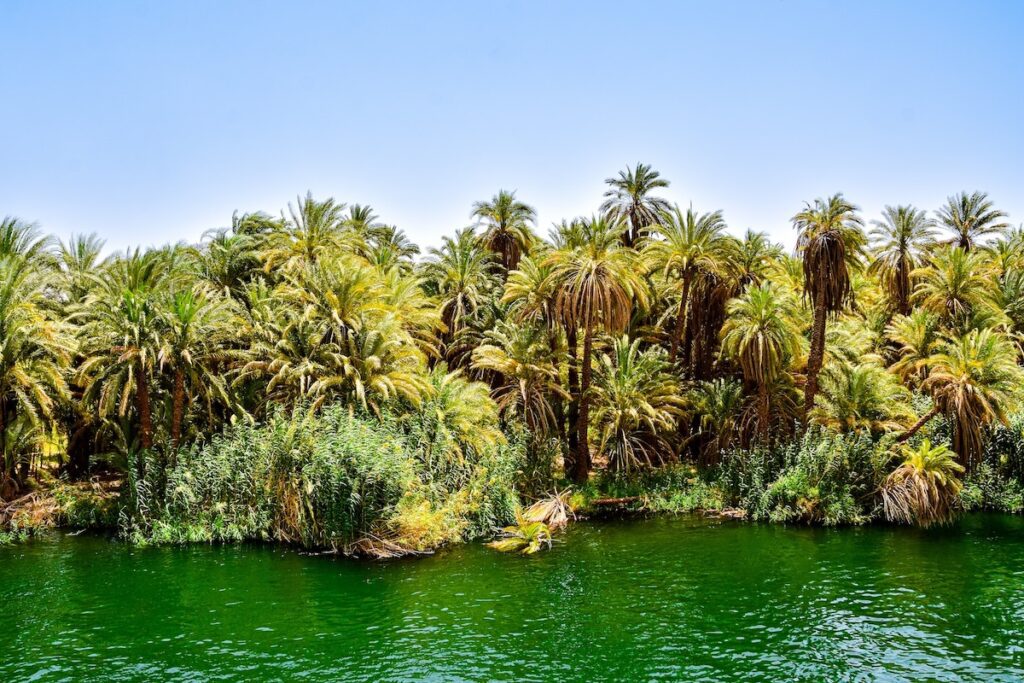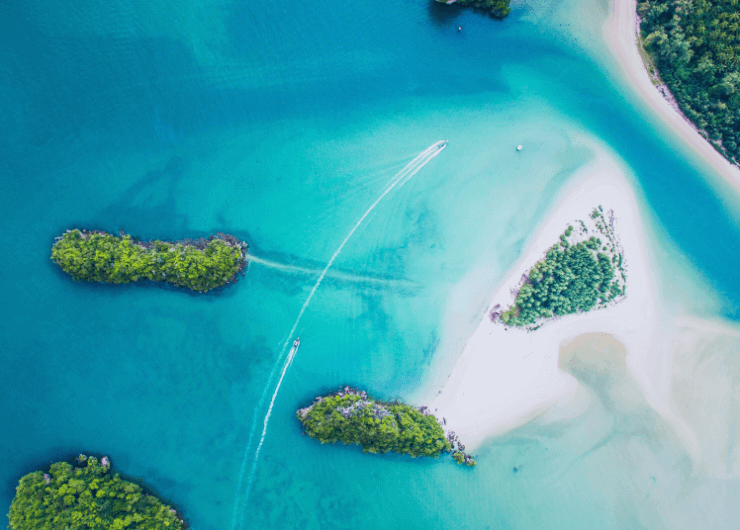Cultural, historical, adventure, and custom customized trips are just a few of the tours that Deluxe trips offer in Egypt and Jordan.

Gently bathed by the soothing waters of the Nile River, off the Aswan coast, lies El Nabatat Island, or rather, the Aswan Botanical Garden—a serene, emerald heaven that has turned southern Egypt's most precious natural treasure. Emerald green in color, the island is a garden of joy to The Beauty of Egypt Aswan City desertscape, enchanting tourists with its rainbow of rare flora, tall palms, and tranquil promenades under a canopy of tropical foliage. Whether you're a flower lover, nature lover, or foreign visitor looking for a quiet escape from the maelstrom of activity, the Aswan Botanical Garden is an eye treat that tastefully blends natural beauty, colonial history, and environmental riches.
The history of El Nabatat Island goes back to the early 20th century when Egypt was under a British colonial period. The island was originally named Kitchener's Island after Lord Horatio Kitchener, who was the British Consul General of Egypt from 1911-1914. As a reward for his war service and for his horticulture endeavors, the Egyptian government gifted the island to him.
Lord Kitchener, who was a keen horticulturist, dreamed of making the island a botanical haven. Help was readily available from the Egyptian Ministry of Irrigation, and he began to bring Indian, Southeast Asian, African, and Mediterranean trees, shrubs, and plants to the island. The island was then filled with a breathtaking variety of plants from all over the world, carefully planted on this small but fertile piece of land on the Nile.
After he left, the island was regained by the Egyptian state and was later opened to the public as a botanical garden, now under the care of the Aswan Department of Agriculture. It has since developed into one of Egypt's quietest green oases in the succeeding decades, renowned for its peaceful atmosphere and natural biodiversity.
El Nabatat Island became a dense botanical garden on 6.8 hectares (some 17 acres) in size, with over 400 species of plants. The garden is indeed unique in Egypt, established based on an ideally chosen collection of African, Asian, European, and American shrubs and trees.
Sabal Palm and Royal Palm – tall tropical palms that line the walkways and form natural arches.
Baobab Trees – native from the African continent with their humungous trunks.
Flame Trees (Delonix regia) – which burst into burning red and orange in spring and summer.
Frangipani and Hibiscus – dainty flower bushes that add color and perfume to the garden.
Cacti and Succulents – plants that have learned to survive in the desert, these will flourish in the desert-like climate of Aswan.
Flowering bushes, medicinal herbs, and mango and guavas fruit trees are also present in the garden. The trees give plenty of shades, so it's a paradise even during the hot season in Aswan.
The density of the vegetation also attracts various bird species, including egrets, kingfishers, and herons, and a mini world is formed amidst the Nile—a very good spot to observe some birds in Egypt.
The most interesting thing about the Aswan Botanical Garden is not its greenery, per se, but the profound sense of tranquility it inspires. Basking there in the languid waters of the Nile, the island itself appears to possess a natural purpose of removing one from city noise. Palm leaves gently whispering, birdsong, and coolness beneath tropical canopy shade all serve to bring on a state of inner peace and relaxation.
They can stroll along gravel walks, relax on benches under trees, picnic, or simply gaze out over the Nile River, Elephantine Island, and eastern Aswan hills. It is especially beautiful in early morning and late afternoon when the golden light of the sun filters through the trees and is reflected off the water.
The garden is also visited by photographers and artists who are inspired every time by the natural shapes, colors, and textures of the garden.

El Nabatat Island is an easy excursion from the East Bank of Aswan. The most lovely and old-fashioned mode to the island is by felucca, an Egyptian sailboat that glides quietly on the Nile, with unbroken sight of the landscape on the opposite side. The trip itself is well worth it because it gives a chance to come in contact with the timelessness of the river.
Alternatively, motorboats are available for quicker transfers. Most boat rides to the island take around 10 to 15 minutes, and many local boatmen offer affordable round-trip fares.
Whether you’re visiting for an hour or spending half a day, there are plenty of things to enjoy at the Botanical Garden:
Leisure Walks: Walk along winding paths beneath the branches of curious trees and palms.
Botanical Discovery: Discover new foliage, much of which has its scientific name marked on it for the sake of learning.
Photography: Photograph lush natural landscapes, especially at golden hour when the lighting is perfection.
Birdwatching: Observe indigenous and migratory birds who make it their home.
Picnicking: Bring a book or a lunch and picnic in one of the island's numerous secluded spots.
Sunset Views: Travel back from Aswan by felucca as the Nile sun sets—a sheer delight.
El Nabatat Island is typically included in Aswan package tours, particularly for those touring the Nubian villages, Elephantine Island, Aswan High Dam, or Philae Temple. The garden adds sophistication to cultural tours with Egypt's love of nature.
Others of local and foreign tourist operators incorporate the garden into day tours, particularly as a break in the relaxation following visits to historic sites. Aswan Botanical Garden is a favorite destination for family, couples, and solo travelers.
Unmatched Serenity: It is one of the most serene spots in Egypt—great for relaxation, contemplation, and sanctuary.
Botanical Diversity: The international diversity of flora not so commonly assembled
Historic Origins: Living history of the colonial era, gardening, and cross-cultural interaction.
Panoramic Panorama: Panoramic view of Nile, Aswan cityscape, and nearby islands.
Eco-Tourism Site: Green destination encouraging nature appreciation and enlightenment on plant diversity.
Location: El Nabatat Island, Aswan, Egypt (by boat from East Bank)
Entrance Fee: Minor entrance fee at the gate (fees slightly different for locals and foreigners)
Opening Times: Generally open every day from 8 AM until sundown
Best Time to Visit: October to April (milder climate and blooming flora)
Facilities: Rest stops, indications, and mooring boat (limited island facilities—bring water/snacks)
A Green Jewel in Egypt's Desert Heart
In a land renowned for its crumbling temples and sun-baked monuments, the Aswan Botanical Garden on El Nabatat Island is a different story—a tranquil, green, and quiet piece of Egypt's nature. It's where you can drive in, inhale deeply, and be amazed at the diversity of global plant life within the context of the Nile.
Whether going on an ancient excursion or just looking for some relaxation, the garden promises serenity, beauty, and a lasting impression of Egypt's more moderate side. Don't miss this chance to discover this flower paradise of Aswan—a soul balm.
Discover now our answers to the most common questions that may come to your mind about tourism and trips to Egypt
Cultural, historical, adventure, and custom customized trips are just a few of the tours that Deluxe trips offer in Egypt and Jordan.
The Dead Sea, Petra in Jordan, the Pyramids of Giza, Luxor's historic temples, and many other famous sites can be expected to be explored with Deluxe Tours.
offer a hassle-free holiday, Deluxe Tours' packages generally include lodging, transport, meals, guided tours with experienced local experts, and entry fees to attractions.
Spring (March to May) and fall (September to November) offer the finest weather for sightseeing and outdoor activities, making those months the best times to visit Egypt and Jordan.
These two countries are close by, only a 1.5-hour flight apart, and when combined, offer a variety of distinctive experiences. We advise you to spend at least 12 days visiting both countries for a truly unforgettable experience
Combining the eclipse viewing with visits to historic sites like the Pyramids of Giza, the Valley of the Kings, and a Nile River cruise are highly recommended.
